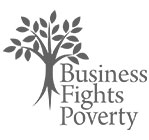Connecting Corporations and Social Enterprises

Mar 31, 2016
Kenya-focused entrepreneur Moka Lantum, Founder and Managing Director of Microclinics, is preparing for pitch to a large pharmaceutical company. The Nairobi-based healthcare management company provides patient and clinic management systems to peri-urban and rural clinics. The software developed by his company, tracks commodities in clinics and enhances, availability, accessibility, quality and affordability of medicines in low income markets. The network of clinics and pharmacies as well as his “Blue Angels”, a network of trained youth that promote the service, can be an interesting distribution channel for healthcare and pharmaceutical companies and can potentially lead to cost savings of 30-60% for 2.5 mn customers.
Unfortunately not many small and growing businesses have the opportunity to pitch to a large corporate and explore the potential of a partnership like Microclinics. While it is widely accepted today that partnerships between corporates and small and growing businesses can bridge scaling challenges and help to co-create innovative service offerings for low income markets or develop impactful delivery and distribution channels, establishing these partnerships is a challenge. There is an information asymmetry on both sides, as a result of which it can take up to a year to form a meaningful partnership. The information gap is even larger for corporates interested to enter into a new market and looking for partners.
“The platform that we have created can provide a lot of value to corporates. However, it is difficult for us to find an entry into corporates. Establishing a winning partnership can therefore sometimes take up to a year.” – Moka Lantum, Managing Partner, MicroClinic Technologies
The potential for partnerships between corporates and small and growing businesses is huge. While low-income families at the so called “Base of the economic pyramid” have many unmet needs and aspirations, they lack access to affordable and high quality products and services. Excluded from mainstream markets, they find it difficult to access and nutritious foods, affordable healthcare, quality education, clean water or reliable energy. Despite progress in recent years to reach out to those living in underserved markets, there are 3 billion people living on less than US$2.50 per day—nearly half of the global population. Similarly, East Africa with its current population of 280 million people with growth predictions of 182% by 2050 and an annual consumption of US$49million with low income consumers comprising 90% of the total expenditure, make it an interesting market for corporates and start-ups alike.
View full article



